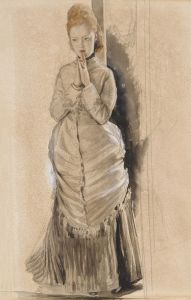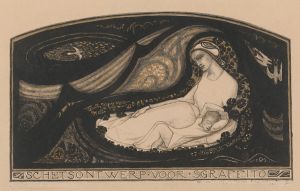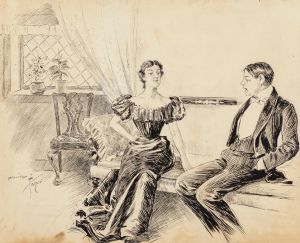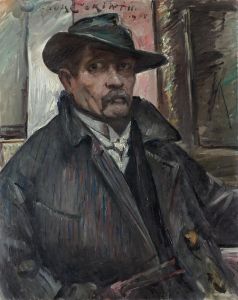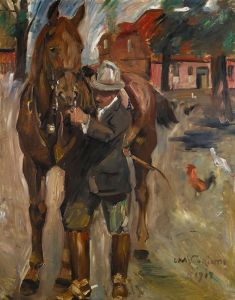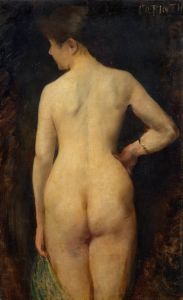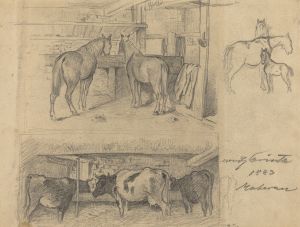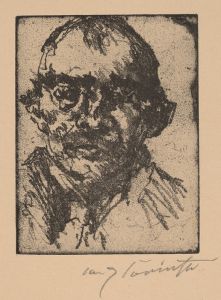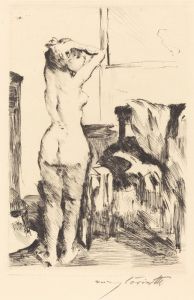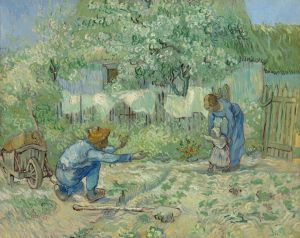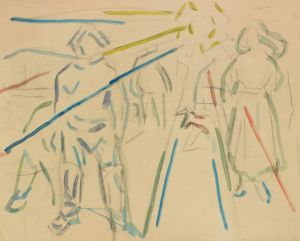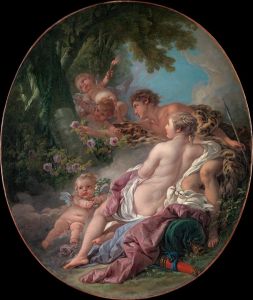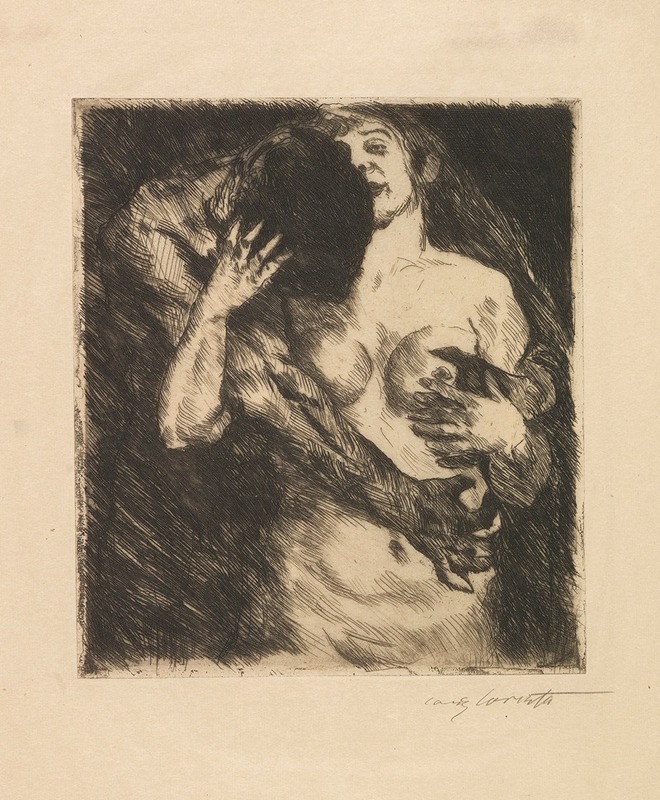
Umarmung
A hand-painted replica of Lovis Corinth’s masterpiece Umarmung, meticulously crafted by professional artists to capture the true essence of the original. Each piece is created with museum-quality canvas and rare mineral pigments, carefully painted by experienced artists with delicate brushstrokes and rich, layered colors to perfectly recreate the texture of the original artwork. Unlike machine-printed reproductions, this hand-painted version brings the painting to life, infused with the artist’s emotions and skill in every stroke. Whether for personal collection or home decoration, it instantly elevates the artistic atmosphere of any space.
"Umarmung" (The Embrace) is a painting by the German artist Lovis Corinth, created in 1917. Corinth was a prominent figure in the German art world, known for his contributions to the Impressionist and later the Expressionist movements. His works often explored themes of human emotion, intimacy, and the complexities of the human condition.
Lovis Corinth was born on July 21, 1858, in Tapiau, East Prussia (now Gvardeysk, Russia). He studied at the Academy of Fine Arts in Königsberg and later at the Academy of Fine Arts in Munich. Corinth's early work was influenced by the academic traditions of his time, but he gradually developed a more personal and expressive style. By the early 20th century, he had become a leading figure in the Berlin Secession, an association of artists who sought to break away from the conservative art establishment.
"Umarmung" is a testament to Corinth's mature style, characterized by vigorous brushwork, rich color palettes, and a focus on the emotional and psychological depth of his subjects. The painting depicts a man and a woman in a close embrace, capturing a moment of intense emotional connection. The figures are rendered with a sense of immediacy and vitality, reflecting Corinth's ability to convey the rawness of human emotion.
The composition of "Umarmung" is notable for its dynamic use of space and form. The intertwined bodies of the couple create a sense of movement and tension, while the background remains relatively abstract, allowing the viewer's attention to remain focused on the figures. Corinth's use of color is also significant; the warm tones of the skin contrast with the cooler hues of the background, enhancing the sense of intimacy and warmth between the two figures.
In 1911, Corinth suffered a stroke that left him partially paralyzed on his left side. Despite this, he continued to paint, adapting his technique to accommodate his physical limitations. "Umarmung" was created six years after his stroke, during a period when his work became more introspective and emotionally charged. This painting, like many of his later works, reflects his personal struggles and triumphs, as well as his deepening exploration of the human experience.
Corinth's legacy as an artist is significant. He bridged the gap between Impressionism and Expressionism, influencing subsequent generations of artists. His ability to capture the essence of human emotion in his work has earned him a lasting place in the history of art.
"Umarmung" is housed in the collection of the Staatliche Museen zu Berlin, where it continues to be appreciated by art enthusiasts and scholars alike. The painting remains a powerful example of Corinth's artistic vision and his ability to convey the complexities of human relationships through his art.





